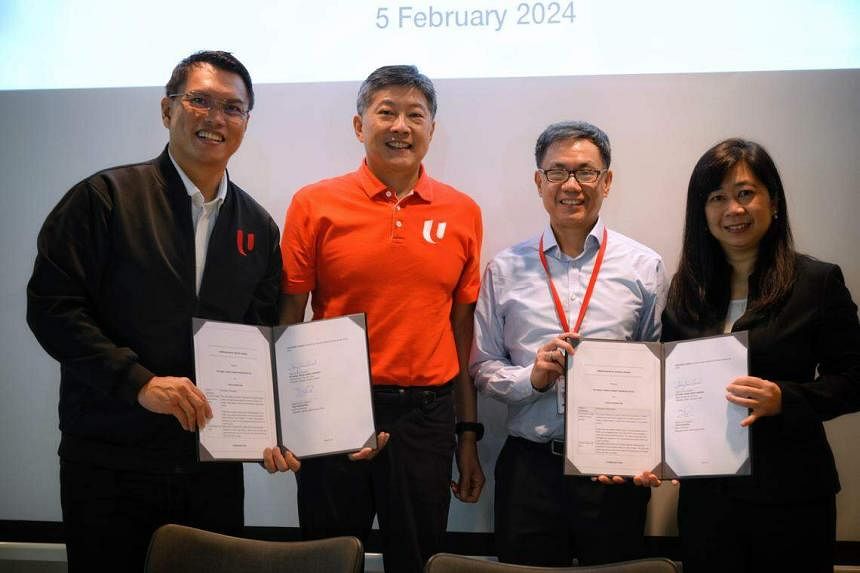SINGAPORE – Employers think that training plans are the best way to ensure mature workers stay employable and help them extend their career runway, according to a recent study.
However, this is not the top practice adopted by companies, according to the research study commissioned by the National Trades Union Congress (NTUC) and Tsao Foundation titled Population Ageing And Slowing Workforce Growth.
The survey from July to August 2023 polled 601 C-suite level executives, hiring managers and human resources managers across 16 industries.
A quarter of employers identified training as the most effective HR strategy, followed by flexible work arrangements (17 per cent) and health and wellness support (14 per cent).
However, the highest number of respondents – 48 per cent – chose flexible workplace arrangements, when asked about the measures currently practised in their organisations to keep mature workers employed. This was followed by health and wellness support (42 per cent), promoting internal job mobility (41 per cent), continuous career development (39 per cent) and inter-generation mentoring programmes (29 per cent).
Training was ranked sixth, picked by only 28 per cent.
Key findings from the study were shared on Feb 5 at a symposium on equipping and retaining mature workers. About 120 attendees including union leaders, academics and employers were at the event held at NTUC Centre at One Marina Boulevard.
The study highlighted the need to bridge the gap between recognising the importance of training and its practical application, to ensure that mature workers stay employed.
It also found that despite upskilling efforts, many older workers still face difficulties finding employment as the knowledge they acquired through training was too basic.
According to the Ministry of Manpower, 27 per cent of today’s resident labour force are workers aged 55 and above. It was estimated that for every worker exiting the workforce, there will only be 0.7 entering in 2030.
In a statement, NTUC and Tsao Foundation said: “With the ageing workforce, possibly shrinking resident labour pool and lower training participation of mature workers, companies may struggle to stay competitive and sustainable.”
More can be done to educate employers and the public on the value and capabilities of mature employees, they said, along with having sufficient and comprehensive content in training programmes to meet companies’ needs and expectations.
This includes reviewing existing training curricula, ensuring that training providers and employers have an agreement on the level of expertise required for certain roles, and conducting regular reviews to stay updated on changing expectations and demands.
The study found that companies have adopted flexible work arrangements and reduced working hours, recognising the evolving preferences of mature workers.
At the same event, NTUC and Tsao Foundation signed a five-year agreement to delve deeper into the issues faced by mature workers.
Under the agreement, both organisations will work together on two research studies to enhance mature workers’ employability and value to employers.
They will also carry out two sandbox projects to show best practices or innovative ideas related to mature workers.

Dr Paul Ong, deputy chief executive of Tsao Foundation, said one of the studies will look into the macroeconomic conditions that can help older workers, while the other will identify the specific practices that can enable both workers and employers to succeed.
He added: “The research work will provide important insights for employers and how and why they should hire, train and retrain older workers. It also helps us to better understand and create better training environments to produce more effective and tailored training that is suitable for older workers and employers.”
NTUC secretary-general Ng Chee Meng said: “To our mature workers, you are a valuable resource, and we want businesses to tap your knowledge and experience. By doing so, we can bridge the workforce gap and mutually gain from the valuable experience that you bring to companies.”
Mr Francis Looi, 58, chief executive of Polar Puffs & Cakes, which was formed in 1926, said companies may prioritise survival and profitability over training in the initial stages.
His company started a four-man team eight years ago to look at the training needs of every staff member, such as in customer service or handling new payment systems. Each employee is given a minimum of 30 training hours annually.
The company has no retirement age. About 40 per cent of his 375 full-time staff are aged 60 and above, with the oldest employee being 73 years old. They are receptive to being trained, he said.
“It is important not to classify them as ‘mature’ workers. All staff need training regardless of age, and they learn together,” said Mr Looi, adding that it costs more to hire new staff than to train existing ones.


